The Geographical Indications Registry in Chennai has recently granted Geographical Indication (GI) tags to seven products from different regions of India, including four traditional crafts from Rajasthan. The GI tags provide recognition and protection to these unique products, highlighting their distinctiveness and origin.
1.Jalesar Dhatu Shilp
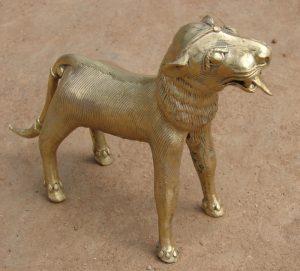
Jalesar Dhatu Shilp is an complex Metal Craft originating from the town of Jalesar in Uttar Pradesh’s Etah district. Over 1,200 small units in this region are passionately engaged in creating exquisite metal craft and brassware. The craftsmanship involves the production of decorative items such as ghungrus (anklets) and ghantis (bells). This traditional art form is particularly mastered by the local community known as Thatheras, residing in Hathuras.
2.Goa Mankurad Mango
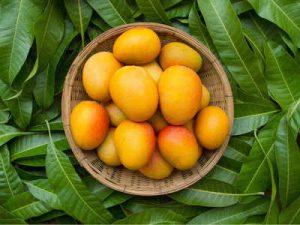
An enchanting Mango Variety from Goa, Goa Mankurad Mango, also referred to Goa Mancurad or Goa Alphonso is a delightful mango variety grown in Goa. Due to its sweet taste, juicy pulp, thin skin, and pleasant aroma, it is regarded as one of the finest mango varieties in India. The mango’s name has an interesting historical background. Initially named “malcorada” by the Portuguese, which means ‘poor colored’ it later evolved into “mankurad aamo” (mango) in Konkani.
3.Goan Bebinca
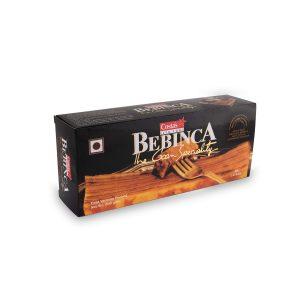
The Regal Dessert of Goa, Goan Bebinca, also known as Bibik or Bebinka, is a traditional dessert hailing from Goa. It is a layered cake made with thin layers of flour, eggs, coconut milk, sugar, and ghee (clarified butter). After adding each layer, the cake is baked in an earthen oven, resulting in a rich and moist texture. This delectable dessert is a traditional Indo-Portuguese pudding, often regarded as the “queen of Goan desserts”
4.Udaipur Koftgari Metal Craft
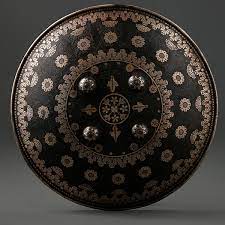
The Udaipur Koftgari Metal Craft from Rajasthan produces exquisite ornamented weapons. This intricate art involves a complex process of etching intricate designs, embedding gold and silver wires into metal, and meticulously polishing it to perfection. The primary purpose of this craft is to ornament weapons, imparting them with a regal and artistic appearance.
5.Bikaner Kashidakari Craft
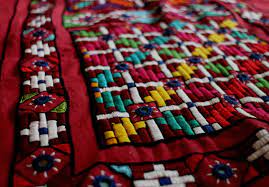
Bikaner Kashidakari Craft offers exquisite needlework for special occasions. It is traditionally crafted on cotton, silk, or velvet and showcases fine stitches and mesmerizing mirror-work. This craft is often employed for objects associated with weddings, particularly gift items. The mirrors used in the craft are believed to protect against the “evil eye” due to their reflective surfaces. The skilled Meghwal community in Bikaner and nearby districts is responsible for preserving and practicing this art form.
6.Jodhpur Bandhej Craft
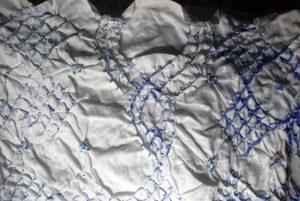
Bandhej, known as one of the most renowned textile art forms of Rajasthan, is the Rajasthani art of tying and dyeing. This technique involves creating patterns or designs on fabrics by tying them with threads and then dyeing them in various colors. Cotton thread is skillfully used to tie the fabric, resulting in intricate patterns and designs. Fabrics made of cotton, silk, wool, or synthetic materials can be utilized for this process, including sarees, dupattas, skirts, scarves, and other garments.
7.Bikaner Usta Kala Craft
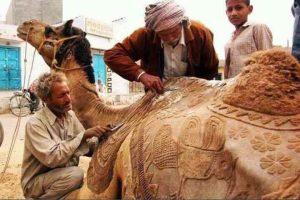
The Bikaner Usta Kala Craft, also referred to as gold nakashi or gold manauti work for its enduring golden hue, showcases artistic camel hide craftsmanship. This unique art form entails treating raw camel hide and skillfully molding it into a range of products. The skilled Dapgar community of leather craftsmen carries forward this tradition with finesse. It is a form of painting that incorporates gold or silver foil to create intricate designs on diverse surfaces like wood, metal, marble, ivory, and leather.
Geographical Indication Tag
A geographical indication (GI) is a sign used on products that have a specific geographical origin and possess qualities or a reputation that are due to that origin. The granting of Geographical Indication tags to these products not only promotes their uniqueness but also safeguards the traditional knowledge and craftsmanship associated with them. It ensures that these cultural treasures continue to thrive and find recognition not only in India but also on the global stage.
Key takeaways for competitive examinations
- GI tags are issued as per the Geographical Indications of Goods (Registration and Protection) Act,1999 by the: Ministry of Commerce and Industry

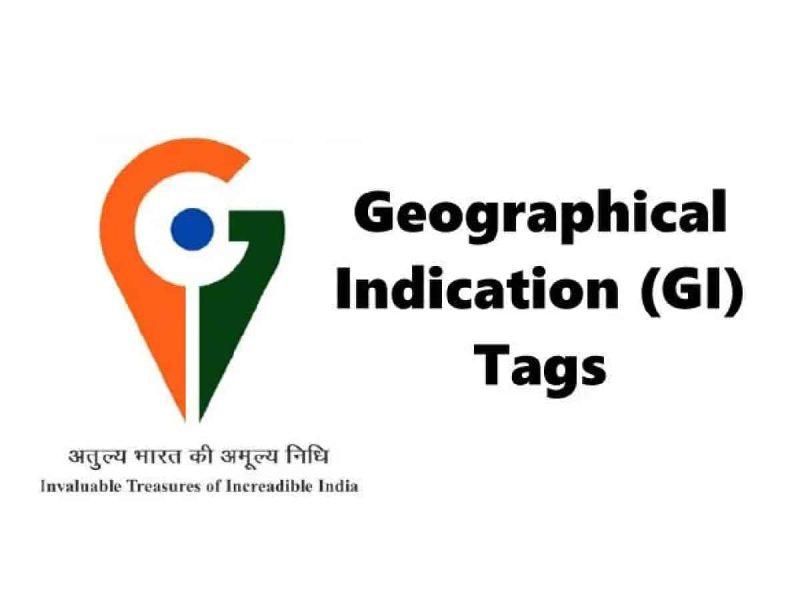

 Indian Olympic Medal Winners List Till N...
Indian Olympic Medal Winners List Till N...
 Who is the Inventor of the Gramophone?
Who is the Inventor of the Gramophone?
 HS Dhaliwal Appointed New DGP Of Andaman...
HS Dhaliwal Appointed New DGP Of Andaman...
